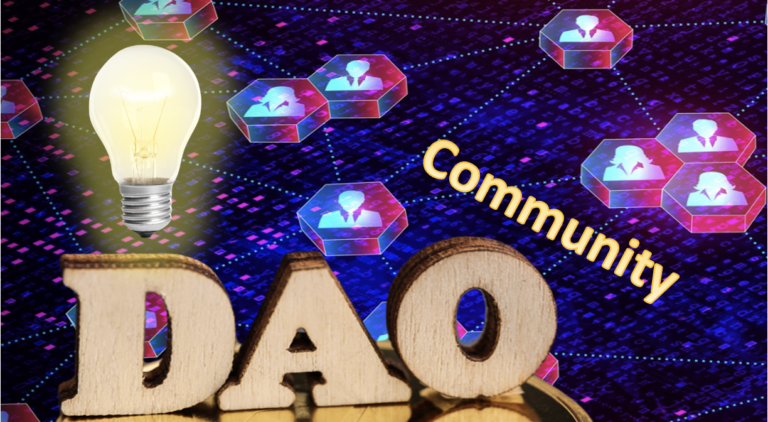Cryptocurrency is a revolutionary new form of money.
Today, we generally believe that there are three defining functions of money: medium of exchange (how easily can we go to a nearby store and buy a dozen eggs?); store of value (can we put it away for safe keeping and feel confident it will still have value later on?); and a unit of account (can we easily use to it measure the value of other goods and services?).
We will find out that cryptocurrency already has, by some measures, checked off all of these aforementioned boxes. To demonstrate what cryptocurrency is, we’ll examine it through the lens of how money is defined. And toward the end of this discussion, we’ll go over crypto’s revolutionary aspects.
To begin our journey in crypto… let’s take a brief tour through the history of money leading up to cryptocurrency. Each historic touchpoint below will exemplify a specific quality or characteristic of money in relationship to cryptocurrencies, and it will therefore help us to better understand how crypto is indeed a new digital form of money.
Origins of Money
Money can be thought of as a method of communication. But what does it communicate? Our earliest discoveries of language were through proto-cuneiform tables, which were ledgers used to record the exchange of goods. These ledgers recorded transactions through wedge shaped marks on the tablet, representing debts owed. Another example of a ledger is the tally stick (or bone). The tally stick worked simply by adding notches on it to also represent how much of a certain good was owed.

In accounting, ledgers are considered to be a record of liabilities and assets. In relationship to cryptocurrency, specifically Bitcoin, it is a transaction ledger that is stored and continuously updated on all the nodes across the Bitcoin Network. This is one of many key features of Bitcoin allowing it to function as digital money.
Another early form of exchange was through an advanced bartering system. Rather than trade one particular item for another, cowrie shells were collected… each shell had a value, and these were exchanged for other goods. The value of the goods being purchased would be counted in shells.
When thinking about tablets, tally sticks and cowrie shells… you can see that one advantage that cowrie shells had over tally sticks and that is portability (another key defining characteristic of money). These shells could easily be carried in your pocket, whereas carrying around a tablet or large tally sticks would be quite cumbersome. Cryptocurrency is portable as well. Unlike gold, which must be stored physically, or even cash for that matter—billions of dollars worth of cryptocurrency can be stored on your smart phone, hardware wallet (which about the size of your finger), your desktop, or on a cloud wallet. Though if you are storing a large amount of Bitcoin, you would likely want it stored on a hardware wallet, as this is considered the safest.
Metal as currency
Later on, in Rome and China, bronze—in its raw form—was introduced as the earliest metal currency. The raw metal itself carried a certain intrinsic value (meaning it had a use case other than money) and could be weighed and exchanged for other goods and services. In China, bronze was transformed into replications of shells because it would be easier to carry in this form (portability); sequentially these bronze shells were adapted into tiny renditions of popular objects (such as farming tools). And lastly, these tiny objects were forged into the form of a metal circles, hence coins were introduced in China. [Chinese Coins: Money in History and Society].

Metal has the feature that could be divided. If you were exchanging bronze in its raw form, as it was traded in early Rome, you would be able to provide a certain amount of bronze that was equal in value to the item that you were exchanging it for. Thus, divisibility is a defining characteristic of money. Cryptocurrencies check the divisibility box in that they can be easily divided: For example, Bitcoin can be broken down into its smallest unit—a satoshi—which is 1/100,000,000 of a single Bitcoin. This allows for things like micro transactions (minute payments), a feature that ordinary money is not capable of. Note: Micro transactions are not practical for Bitcoin at this time as the fees for the transaction would be higher than the micro payment itself.
Another defining characteristic of money is durability. Metal is durable for obvious reasons, while cryptocurrencies are durable as well. They are stored on an immutable, distributed ledger called the blockchain spread throughout the world within thousands of nodes. This blockchain, cannot be broken as each full node contains the entire ledger and transaction history. By nature it is a system backed up over and over again all over the world.
Metal coins eventually were sized and stamped (forged) by a their supporting ruler. As such they became fungible, meaning one coin could be exchanged for another (just like you could trade one quarter for another)—it doesn’t matter that the quarters are different physical objects, what matters is that they share the same value. This is fungibility. Unless you are dealing in a type of cryptocurrency called non-fungible tokens (a topic for whole other discussion), cryptocurrencies are also fungible: since one bitcoin in your crypto wallet is worth the same as a bitcoin present in another person’s wallet.
The last characteristic to point out is that metals coins are acceptable; money is acceptable. You can go to the store with your coins, and they would be accepted by the store clerk. In this sense, money is a social contract of sorts where the people come to believe in its value through a kind of faith–they believe the money is worth something.
People now agree that Bitcoin has value too, just ask someone if they will trade you twenty dollars for one bitcoin, they’ll probably take that deal in a second. But in another sense cryptocurrency may not be “acceptable” in that most merchants have yet to implement the technology to accept Bitcoin. This, however, is changing quickly as Bitcoin becomes adopted more and more.
Generally, you can see how cryptocurrencies share with coins many of the characteristics and functions of money: exchangeability, unit of account and a store of value. But to an understand why this advanced form of currency is needed, let’s turn our discussion to how money works in the modern world.
Modern Forms of Money: Faith Backed Currency
Metal coins backed by their sovereign states became a long-standing form of currency. But, as Adam Smith pointed out in his iconic book The Wealth of Nations, metal coins historically do have issues:
“Princes and sovereign states have frequently fancied that they had a temporary interest to diminish the quantity of pure metal contained in their coins.”
“Diminish[ing] the quantity of pure metal” was an early form of currency manipulation by taking out the best part of the coin (the silver for example). As an example, Adam Smith goes through a timeline of the price of corn in relationship to silver coins. When sovereign states mint coins with less and less silver (or other metals), it reduces the precious metal portion within the coin’s total weight. This reduction may go unnoticed for a short period, but ultimately the coins would be worth less in corn, in essence robbing people of their wealth. One could say that the inherent value of the coin–through the extraction of the most desired feature, the silver–was lost.
With the invention of paper money—currencies eventually lost this inherent value all together, or at least their direct ties to an object with a tangible value such as silver. What replaced it was faith in the supporting ruling class behind the currency.
James Surowiecki elucidates this by pointing us to the 13th century under Kublai Khan:
 “Kublai Khan was ahead of his time: He recognized that what matters about money is not what it looks like, or even what it’s backed by, but whether people believe in it enough to use it. Today, that concept is the foundation of all modern monetary systems, which are built on nothing more than governments’ support of and people’s faith in them. Money is, in other words, a complete abstraction—one that we are all intimately familiar with but whose growing complexity defies our comprehension.”
“Kublai Khan was ahead of his time: He recognized that what matters about money is not what it looks like, or even what it’s backed by, but whether people believe in it enough to use it. Today, that concept is the foundation of all modern monetary systems, which are built on nothing more than governments’ support of and people’s faith in them. Money is, in other words, a complete abstraction—one that we are all intimately familiar with but whose growing complexity defies our comprehension.”
We have familiarity with the next steps in the evolution of money. How our currency wavered from being backed by precious metals and the government. It wasn’t until the 1970s, that we essentially left the gold standard behind, and the dollar became supported solely by the credit (or the full faith and security of the United States).
Leaving the gold standard behind meant than any sense of intrinsic value was no longer applicable. For example, the beauty of gold contained within a gold coin was no longer tied to money. Modern day money is a social contract supported by the faith in the government’s central banking system backing the currency. Bitcoin and cryptocurrencies are also faith-backed, but instead of being supported by faith in the underlying government… cryptocurrencies are backed by the mathematical code, un-hackable cryptography and immutable ledgers (blockchains).
People main means of transaction is through fiat (government backed currency), which can also be transacted through third parties by way of credit cards and our electronic banking system: ACH withdrawals, wire transfers, and internet transactions. We also extended our ability to purchase goods and services to the mobile web, as we now have the ability to transact laptops, desktops, smart phones and even smart watches. Our use of metal coins and paper currencies are diminishing over time.
Up until this point, we pointed out how digital money in the form of cryptocurrency only shared in the features and functions on traditional money. Now, we’ll go over the characteristics of cryptocurrency that our existing forms of payment cannot offer. And how they may be a solution to inflation, currency manipulations, and essentially an unstable system that seems to be in need of a bailout through stimulus and money printing every decade or so.
The Revolutionary Qualities of Cryptocurrency
Cryptocurrency takes faith in money to a new place.
 The pseudonymous Satoshi Nakamoto is credited with the invention of cryptocurrency through the Bitcoin blockchain. In his white paper, he describes a “peer-to-peer system of transaction” allowing payments to be sent directly from one to another without central authority as an intermediary.
The pseudonymous Satoshi Nakamoto is credited with the invention of cryptocurrency through the Bitcoin blockchain. In his white paper, he describes a “peer-to-peer system of transaction” allowing payments to be sent directly from one to another without central authority as an intermediary.
Tracing back to our discussion on the history of money, you can see that by way of the tally stick, tablets or cowrie shells, such early transactions may have took place in a peer-to-peer fashion without a central authority. Ideally, transactions are ours alone, not conducted through the invisible hand of power. Much like the prior example of metal currencies being manipulated by the ruling class through the reduction of precious metals in the coin, fiat backed currencies undergo the same inflationary pressures.
You can see this most vividly when governments stimulate the economy through stimulus checks and large fiscal bailouts for banks… all in an effort to pump money into our economy during times of crisis. But what is the actual cost to this practice? When you increase money supply by vast sums, inflation creeps into the economy, which especially hurts the poor and lower-middle class (the most populous demographics of our nation). These are the people that are impacted the most when gas prices at the pump go up, or the cost of eggs doubles in a short amount of time.
Monetary actions by central banks increase the total debt of government. When they increase money supply through stimulus (and the purchase of bonds from commercial banks—a practice known as quantitative easing), who ultimately owes that money back to the Federal government? We the people do, as the debt is on the United States balance, which may never be paid back in full at this point because it is so large… but you can guarantee it will be a made into a reason as to why our taxes must increase to finance our government. So, on the surface, though it may seem necessary or fortunate for us to receive stimulus checks from the government, and for bank to big to fail to receive bailouts… these funds come with a long-term cost to our society.
 It may very well be that it was this practice of government intervention and manipulation of currency through stimulus, quantitative easing and bailouts that prompted the creation of cryptocurrency by Satoshi Nakamoto. In the genesis block (the very first block ever produced), Satoshi includes the following headline as way of expressing dismay over the handling of the economy at the time: “The Times 03/Jan/2009 Chancellor on brink of second bailout for banks”
It may very well be that it was this practice of government intervention and manipulation of currency through stimulus, quantitative easing and bailouts that prompted the creation of cryptocurrency by Satoshi Nakamoto. In the genesis block (the very first block ever produced), Satoshi includes the following headline as way of expressing dismay over the handling of the economy at the time: “The Times 03/Jan/2009 Chancellor on brink of second bailout for banks”
The Bitcoin network was the first of its kind and introduced to the world cryptocurrencies, blockchains, alt coins and all of the other jargon we are becoming familiar with. It’s revolutionary because through Bitcoin we can now transact peer-to-peer, without a central authority… hence the term decentralization.
The Decentralized Economy
The backbone of crypto is decentralization. Our entire economic and digital world is currently centralized. Without crypto, just about every form of modern exchange is reliant upon third parties acting as middle persons, and not just the banks: credit card companies, exchanges—even our very dollars are centralized in that they are backed by the faith and security of a government.
Crypto relieves us from this burden by taking out the middle person. You can look at our whole economy as being built upon an enormous infrastructure centered around a no-longer-necessary third party. The size of the financial service economy alone is estimated at around 1.5 trillion dollars—this does not account for the total market value of equities and other assets like gold. Nor does account for the amount of money that is collateralized through mortgages (about 10.3 trillion). A decentralized economy through cryptocurrency will shift us away from such centralization and move us in the direction of peer-to-peer transactions. Granted, there will be custody services for people who wish to hold their crypto with a third party, and there is a degree of complexity to many services that will take time to develop into a new form of crypto economics, but as people come to trust and experience how crypto can work to our benefit—our system of centralization becomes completely turned on its head.
Every bank, every brokerage, every department, every credit card company, every financial service provider, and every skyscraper serving the centralized economy will be reinvented. Government’s role in maintaining our national debt, distributing funds, working on creating jobs, and setting rates… all of these activities will have to be rethought about in the face of peer-to-peer decentralized transactions. Yes, there will be a great transitionary period into this new economy, but the productivity that cryptocurrency will unleash is extraordinary.
Corporations, people, and even governments tend to move in the direction of efficiency—where do we get the most out of our money, so to speak. And as efficiency saves people time and money, it will become apparent that by moving toward a decentralized economy built on cryptocurrency, efficiency and productivity will be greatly enhanced. The gargantuan costs of maintaining our existing centralized infrastructure will be replaced by a peer-to-peer infrastructure that will be much less costly to operate and maintain.
In fact, I believe this change to crypto is inevitable. Technology isn’t adopted by any one single entity making a choice to adopt it. It becomes adopted slowly through the collective decision making of an entire people. When businesses and the like see side-by-side the choice between blockchains and transitional forms of transaction.. They will choose crypto.
Though decentralization may be the key revolutionary element to crypto, there are many more advantages over traditional fiat money:
- Designable: There is no one true form to cryptocurrency. They can be designed according to the functions they are to serve. For example, Bitcoin, in its current state, may serve us best as a store of value. While Ethereum, may work best as a network enabling smart contracts.
- Security: Cryptocurrency is secured by cryptography (the same code foundations that are used to protect our nuclear weapons systems from being hacked). Rather than have our credit card information stored on hackable servers at corporations, blockchains provide a highly secure, un-hackable (as with Bitcoin) means of holding value.
- Privacy: Cryptocurrencies have varying layers of privacy. Until you attach your identity to an exchange, cryptocurrency is basically pseudonymous, meaning that even though a transaction address history is trackable through Bitcoin, your actual identity is not trackable until you identify yourself to the network. Privacy coins like Monero can add an additional layers of privacy over Bitcoin.
- Programmability: Cryptocurrencies are programmable. Through smart contracts and dApps, you can program many different kinds of functions into a cryptocurrency. These functions can be performed in the background to occur automatically, such as setting up an entire payroll system to execute on given timeline based on a set of rules. The capabilities of programmable money is mind-boggling. There is no telling where the creative applications enabled by blockchain will lead us in this regard.
- Uncensored: Cryptocurrencies are generally irreversible, so that information posted through a blockchain is censure free. Once posted, it doesn’t leave. In the age of surveillance capitalism, and social media platforms censuring users daily—it is becoming apparent that we need a censorship resistant platform to protect our freedom of speech. The entire internet can be redesigned to run on a decentralized network protected by blockchain cryptography and democratized through voting systems within the blockchain. Such applications are slowly coming into fruition and will help protect our digital human rights.
- Scarcity: Crypto can be designed to achieve a certain level of scarcity within the coin. There will only be 21 million Bitcoin ever mined. Even gold, with new gold mining technologies being developed, the price of gold could be greatly impacted if it loses its scarcity. There is even talk of a gold asteroid, which would plummet the value of gold were it to be mined somehow.
Aside from these features, some of the more technical aspects of cryptocurrencies relevant to the question “What is cryptocurrency?” are centered around their form factors.
Coins and Tokens
Cryptocurrencies can be broken down into two forms: a coin and a token. Some examples of coins are Bitcoin (BTC), Ether (ETC), and Cardano (ADA); some examples of tokens are Uniswap (UNI), Aave (AAVE), and Tether (USDT). Coins can be understood as riding on the rails of their respective blockchain network, while tokens are created through these coins.
When we use Bitcoin, for example, we are solely using the Bitcoin coin on the Bitcoin Network. The network itself is hosted by of thousands of nodes running the blockchain. The same is true for Ether and the other platform coins mentioned above. Coins can act as the base layer for other cryptocurrencies to be created upon, which are called tokens. For example, with Ether as the native coin on the Ethereum blockchain, Tether the ERC-20 token was created through a smart contract.
The most popular tokens that run on the Ethereum blockchain are mostly ERC-20 tokens such as the aforementioned Tether. ERC-20 is the stock name for any number of tokens that were created on the Ethereum blockchain in accordance this standard. The standard allows for interoperability for developers when creating ERC-20 tokens, wallet, dApps, essentially any type of coding to help make compatibility easier
Aside from Tether, some other examples of ERC-20 tokens are Compound (COMP) and Chainlink (LINK). ERC-20s are not the only token standard; ERC-1125 is another example of a framework by which developers create tokens on the Ethereum network. Enjin (ENJ) token runs on this standard, which allows for digital items (NFTs) to be sold for gaming. In fact, there are quite a number of ERC standards for creating tokens on Ethereum that have been developed over the years.
The Future of Money
It is my hope that this discussion showed why cryptocurrency is quickly becoming the future of money. It is the better solution; it runs counter to the centralized world of surveillance capitalism and toll collectors, who are the third parties currently involved in our every transaction. There is much, much more to be said about cryptocurrency and how it will shape our futures… I encourage everyone to continue to learn and find real world ways to incorporate crypto into your daily life.






